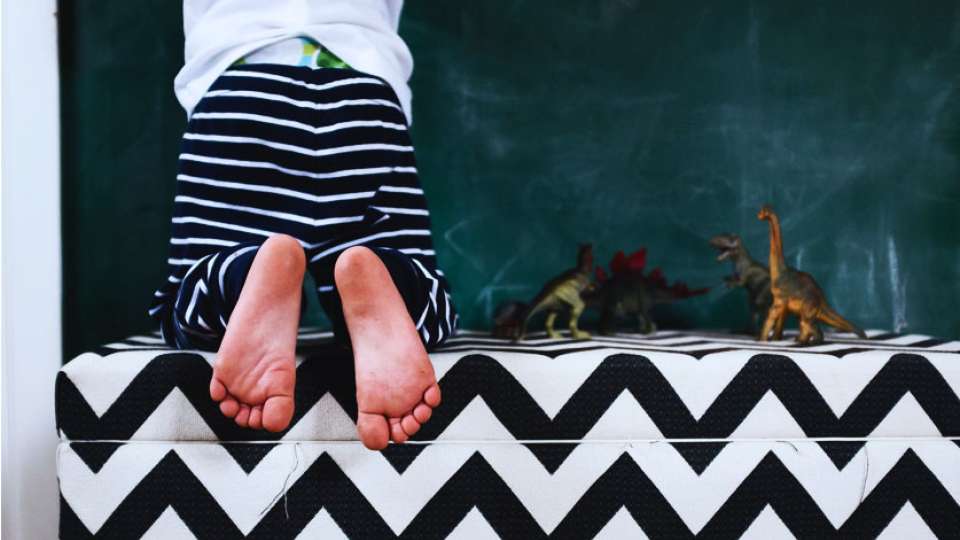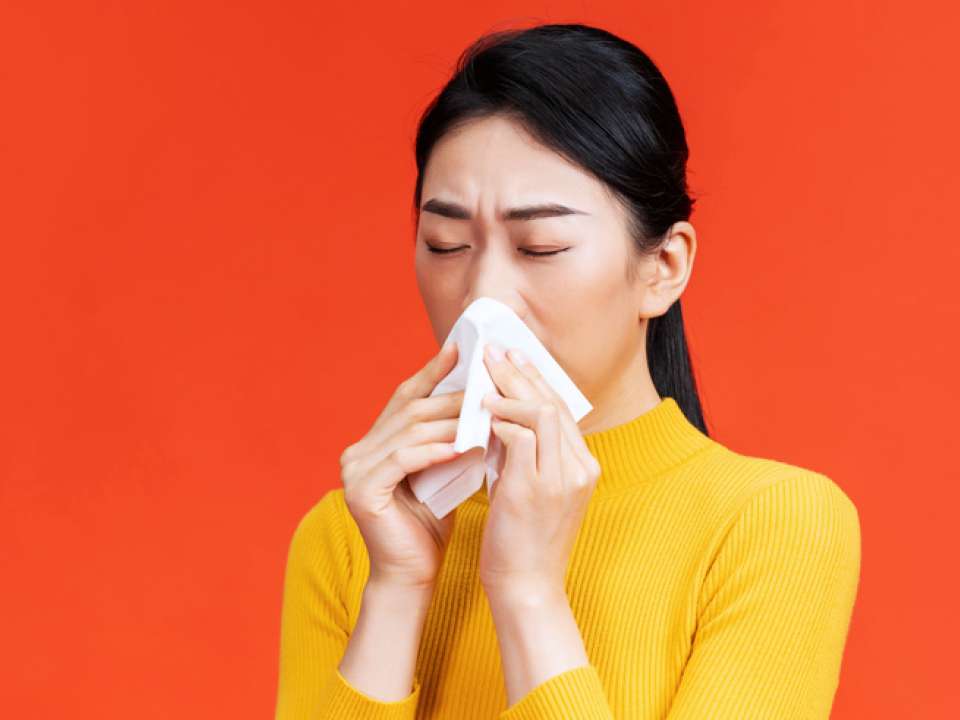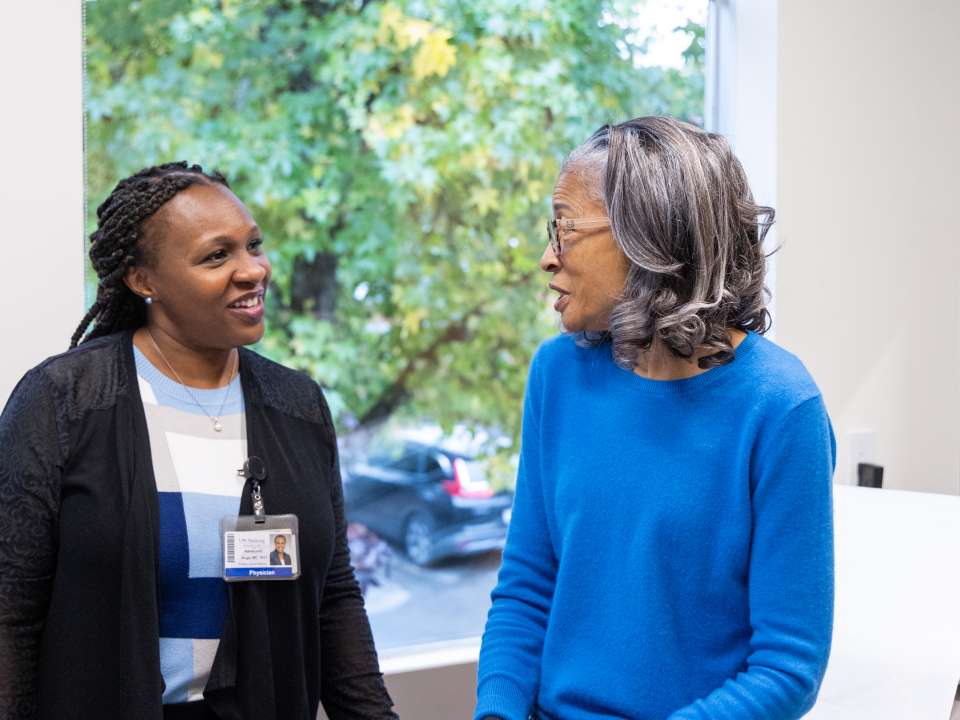
I remember first hearing about the dreaded hand, foot and mouth disease (HFMD) years ago, but somehow managed to evade it when my first daughter was in daycare. My 2-year-old was not so lucky and recently came down with an especially gnarly case.
My apologetic email to her daycare provider made me feel like I’d done something wrong and somehow personally ushered the plague into their cheerful little classroom. The subsequent email the daycare sent out to families, informing them that “hand, foot and mouth had arrived in their class!” did not make me feel any better.
Luckily, the disease, though gross, is common and usually harmless. Not convinced? I was the same way, but my fear somewhat subsided once I learned a little more about those obnoxious little blisters.
What exactly is hand, foot and mouth disease?
Basically, it’s an unpleasant, blistery rash that no one wants to deal with.
“It has a unique rash, people can see it, and they worry about it,” says Dr. Linda Vorvick, a family medicine physician at UW Medicine’s Primary and Specialty Care Center in Ballard.
Hand, foot and mouth disease is caused by viruses that belong to the enterovirus family, including coxsackievirus A16 (the most common one), coxsackievirus A6 (a more severe version) and enterovirus 71 (a rare and severe version associated with cases in East and Southeast Asia).
People don’t normally get tested for the disease, but the symptoms — which as the name implies include blisters on the palms of the hands, soles of the feet and inside the mouth — are usually a giveaway. It also primarily affects children who are under 5 years old and is often found in school and daycare settings.
What does hand, foot and mouth disease look like?
Though the trademark blisters are the most obvious sign, the disease can also cause flu-like symptoms in kids three to five days after they catch the virus, including:
- Fever
- Eating and drinking less
- Sore throat
- Feeling unwell
They may also have sores in their mouth, which can cause them to stop eating and drinking (except for cold beverages) and can make them drool excessively.
Curious about exactly what that skin rash looks like? Feel free to search images on the internet if you’re brave. But for everyone else: the rash is usually made up of flat or slightly raised red spots and blisters with fluid inside. And even though the name of the virus suggests otherwise, bumps can show up all over the body (which happened in my daughter’s case) especially in the leg, arm and butt areas.
Another quirky fact according to Vorvick? Some kids may have no symptoms at all. Being previously exposed to the virus can make you immune to that strain — though unfortunately (like COVID-19) there are other strains that could still affect you.
Is it related to chickenpox or other rashes?
No. Though they are both viruses, they are completely different kinds. The spots they produce are also distinct. Hand, foot and mouth blisters don’t disrupt the basement membrane of the skin (the deeper parts), which means they don’t scar, so long as they aren’t being excessively picked at. Chickenpox bumps do disrupt that deeper layer of tissue, which can lead to scarring.
Another disease that hand, foot and mouth disease is not related to? Hoof and mouth disease. Cattle, pigs, sheep and goats can get hoof and mouth disease (also called foot and mouth disease), but people cannot. Nor can animals get hand, foot and mouth disease. Hopefully, this makes you (and your family pets) feel better.
Are you going to catch it?
Probably not. But maybe? I know, not the most reassuring answer, but it really does vary with every situation.
If you were already exposed to the virus (which many of us have been), then you may be immune — however, there are still plenty of adults who contract this disease.
Though most of these unfortunate souls are the parents of kids who bring it home from daycare, hand, foot and mouth has also been known to rear its blistery head at military recruitment boot camps.
“All these diseases come back in boot camps because you suddenly get a whole bunch of people from different places and you put them in the same place and they live on top of each other for a few weeks and they pass around all kinds of infections,” explains Vorvick.
Is everything hopeless?
Of course not. But hand, foot and mouth disease is very contagious, so you need to understand how to protect yourself and your kids. It is spread through respiratory droplets (cover those coughs and sneezes!), close contact with an infected person, feces (yuck, diapers) and touching objects and surfaces that have the virus on them. To help slow the spread you should:
- Wash your hands frequently, especially after changing diapers
- Help young children wash their hands correctly
- Clean and disinfect surfaces that get touched a lot (tables, doorknobs, etc.)
- Avoid touching your eyes, nose and mouth
- Try not to have close contact with someone who is sick with HFMD, and especially avoid their blisters which are full of viral particles
When it comes to hand, foot and mouth and daycare, every place is going to have its own rules about kids returning to the classroom. Vorvick notes, “Keeping a kid out of daycare when they have the rash doesn’t really prevent the spread. The kid has already infected the other kids around them. So, unlike other kinds of rashes like chickenpox where you wouldn’t send the kids back when they had the rash, this one doesn’t necessarily need your kid to be excluded from daycare once they’re feeling fine.”
Transmission is generally early on: people are most contagious in the first week of illness, which includes the one to two days before the rash appears. After that, bodies start to create antibodies, and people are less likely to transmit the virus.
How do you treat it?
As terrible as hand, foot and mouth disease may look (and boy can it look terrible), it’s really more of a wait-and-see situation when it comes to treating it.
“It’s the same symptomatic treatment for any cold or any viral illness. If they seem miserable give them Tylenol or ibuprofen,” Vorvick says. “There really isn’t anything you can do – the body has to fight the virus off itself.”
There are some exceptions — if your kid seems much sicker than what is described above, they need to be seen, as there are some blistering illnesses that are far more serious than hand, foot and mouth. Things like super high fevers, total lethargy, not eating or dehydration should be taken seriously and reported to your doctor right away.
Moving forward
My daughter has fully recovered from her bout of hand, foot and mouth disease and doesn’t seem nearly as traumatized by the experience as I am. Though we’re trying to move on, I did recently peek through her daycare window to wave goodbye after dropping her off and saw a gaggle of toddlers contentedly gnawing on the communal class toys. Let’s just hope another strain of the disease isn’t lurking around the corner.

 Healthy ideas for your inbox
Healthy ideas for your inbox





